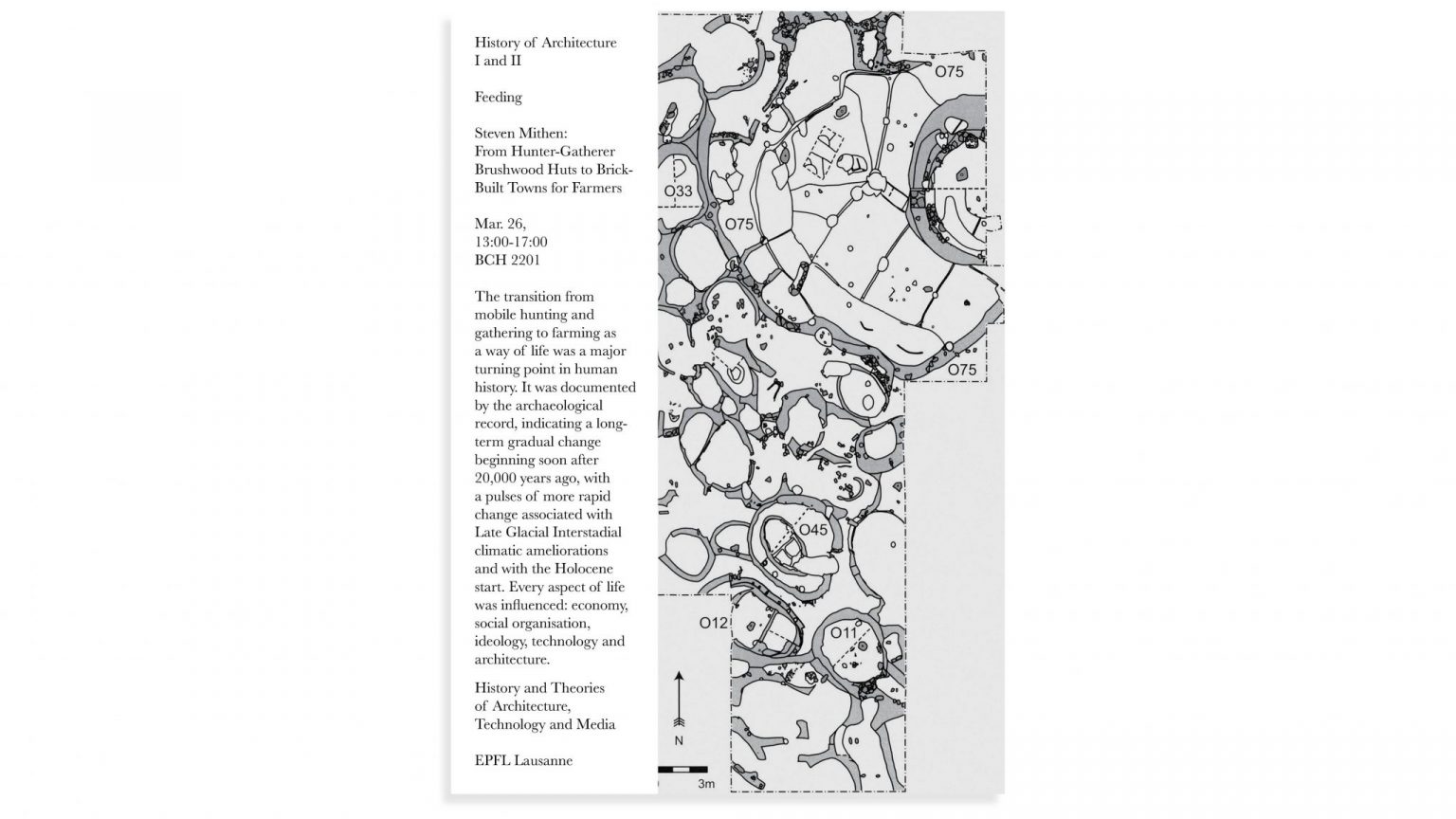Guest Lecture by Steven Mithen

Schematic plan of structures exposed at WF16 by the 2008–10 excavations. Source: Mithen, Steven J., Bill Finlayson, Sam Smith, Emma Jenkins, Mohammed Najjar, and Darko Maričević. “An 11 600 Year-Old Communal Structure from the Neolithic of Southern Jordan.” Antiquity 85, no. 328 (2011): 350–364.
From Hunter-Gatherer Brushwood Huts to Brick-Built Towns for Farmers
The transition from mobile hunting and gathering to farming as a way of life was a major turning point in human history. This occurred independently in several different parts of the world during the early Holocene, between 12,000 and 5000 years ago. It earliest occurrence was in Southwest Asia, within the region known as the Fertile Crescent: the arc of land that stretches from southern Jordan in the west, north along the Mediterranean coast, through Syria, southern Turkey and then south through Iraq and Iran towards the Persian Gulf. The transition to farming is documented by the archaeological record, indicating a long-term gradual change beginning soon after 20,000 years ago, with a pulses of more rapid change associated with the climatic ameliorations of the Late Glacial Interstadial (c. 14,500-13,000 BP) and, more dramatically, with the start of the Holocene between 12,000 and 10,200 BP. The transition influenced every aspect of life: economy, social organisation, ideology, technology and architecture. Archaeologists have long debated why and how it occurred.
This lecture will present and discuss the changes in architecture through this process, exploring how it is related to social, economic and ideological change. The starting point is the small huts represented at the Epi-Palaeolithic site of Ohala (c. 21,000 BP) followed by larger circular dwellings, such as at Ain Mallaha (c. 14,500 BP). The most dramatic changes occur during the Pre-Pottery Neolithic A period (c. 12,000-10,200 BP), which will be the focus of the lecture. These are best represented at the sites of WF16 in southern Jordan and Göbekli Tepe in southern Turkey, both having domestic and monumental structures and with evidence for elaborate ritual activity. When farming becomes fully established, a remarkable architectural unity emerges throughout the region of rectangular mud-brick buildings with similar floor plans, often of two storeys and forming the first towns.